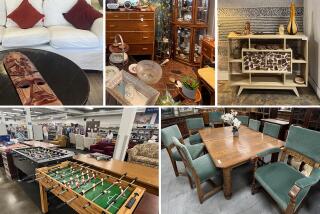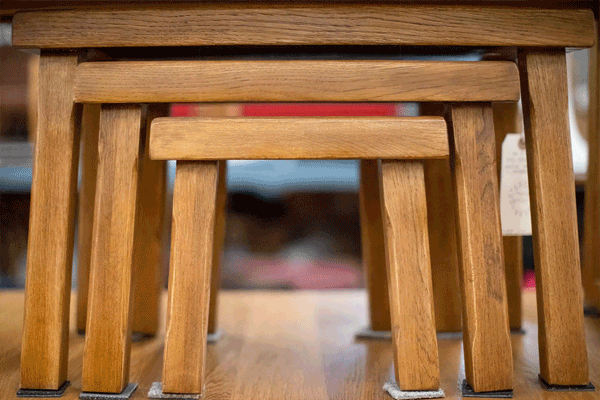Auction Prices Rising : Victorian Furniture Back in Favor
- Share via
Two questions often asked about old furniture are: How much is it worth and what style is it, says Joseph T. Butler.
Butler, who oversees Washington Irving’s Sunnyside and several other historic restorations, is director of Sleepy Hollow Restorations in Tarrytown, N.Y.
Recently, he wrote a book to help those who want to find out what style a piece is. As to what it is worth, that’s a question whose answer fluctuates, depending on which styles are “in” at the moment.
Although nothing seems likely to touch Queen Anne- and Chippendale-style furniture for monetary value and sheer popularity, Butler says that late 19th-Century furniture is coming in for considerable attention and price increases, judging from recent auctions.
Belter’s elaborate carved Victorian furniture, so-called aesthetic furniture of the late 19th and early 20th centuries, and examples that date from the Arts and Crafts movement in the late 19th Century, have all been commanding high auction prices.
Forced Out of Market
“To our eyes, these styles that only a few years ago were considered too elaborate, ornamented and heavy are beginning to look good again,” Butler said.
With late 19th-Century pieces appreciating rapidly in price, many persons who like old furniture are being forced out of the market. So, what can an individual of moderate means collect that will be serviceable at present and that can be expected to appreciate in value?
Butler offered a few tips: “Look for an original, not a reproduction. It’s good if the product was made under the direction of a designer and if the designer’s name is known. Look for quality materials and quality craftsmanship.”
Examples of contemporary furniture he believes will probably appreciate in value are pieces designed by members of the German 20th-Century Bauhaus design school. On the other hand, some periods are fads for awhile and then fade from view. An example of this type may be 1950s furniture that he believes may be on its way out.
In his new book, Butler covers the range of American furniture styles from the 17th to the 20th centuries. Drawings by Ray Skibinski of pieces and characteristic design details are included.
One reason why American antique furniture is often difficult to identify accurately is the penchant Americans have for reviving old styles, but changing them a little bit.
The wing chair is a good example. Wing chairs started out as bedroom chairs in the 17th Century, and usually included a chamber pot concealed beneath the seat cushion. The chair went out of fashion after the American Revolution. It was replaced in the bedroom by a chair Butler says was known as the “lolling chair.”
Between 1875 and 1910, the wing chair was revived during the Colonial Revival period, that popularized 17th- and 18th-Century designs. However, instead of bringing back accurate examples of Queen Anne or Chippendale or other styles, many manufacturers created furniture that contained elements of all sorts of styles, indiscriminately calling them “Colonial.”
Wing chairs reappeared as large easy chairs and were sold as living room furniture--a state of affairs still true today.
The unwary collector attempting to date furniture may easily become confused when dealing with later copies of earlier styles, Butler noted. That’s why books such as his, which describe and illustrate furniture examples, are useful.
(“Field Guide to American Furniture” is published by Facts on File Publications.)


